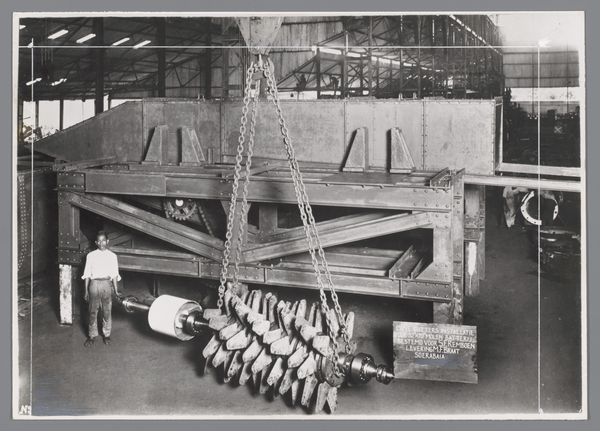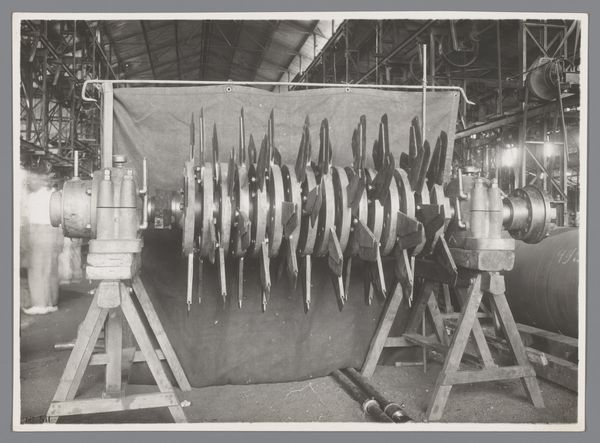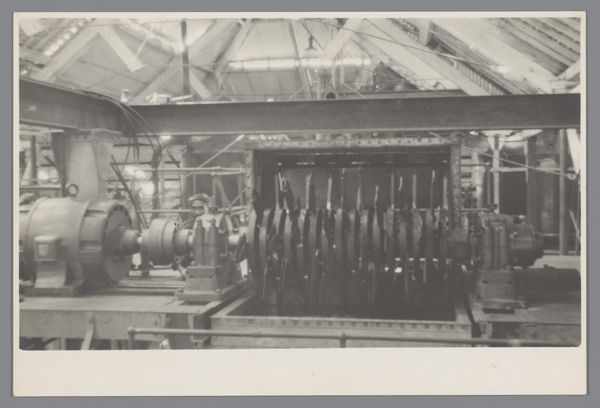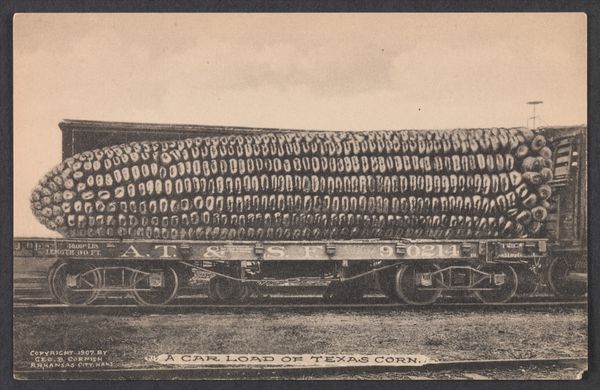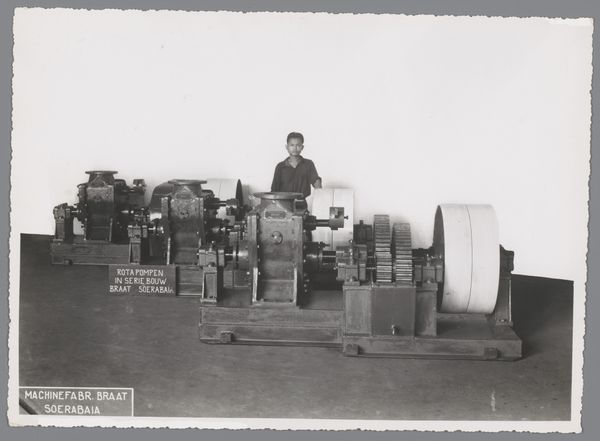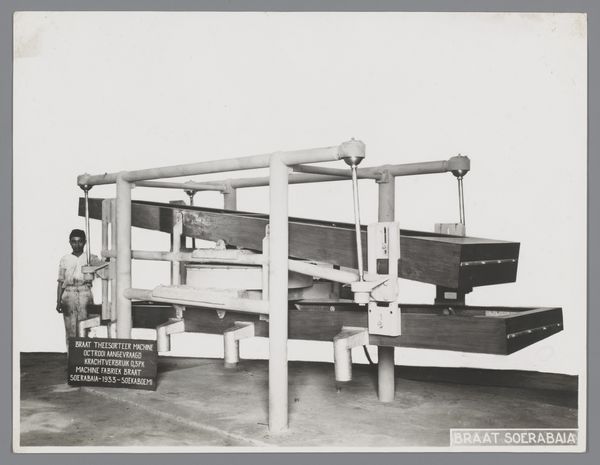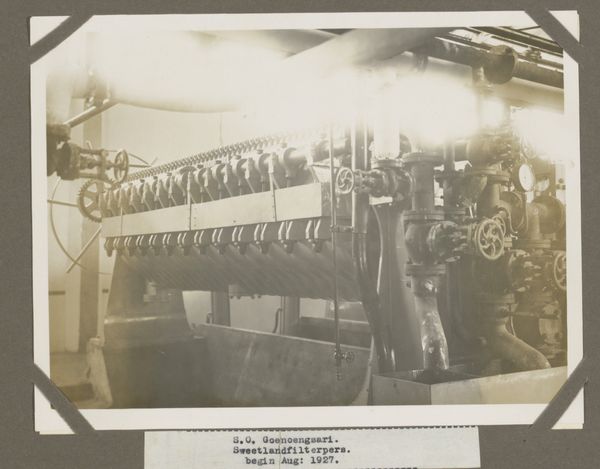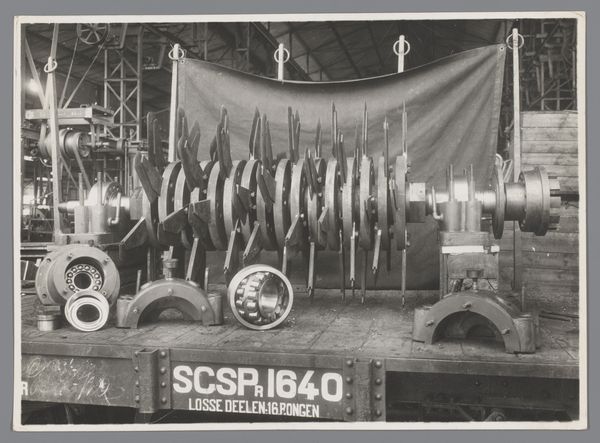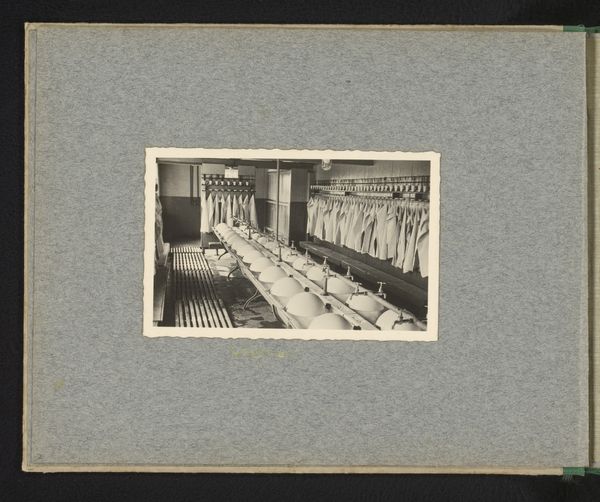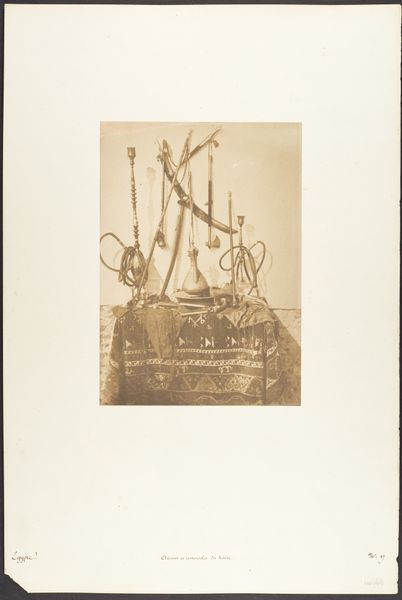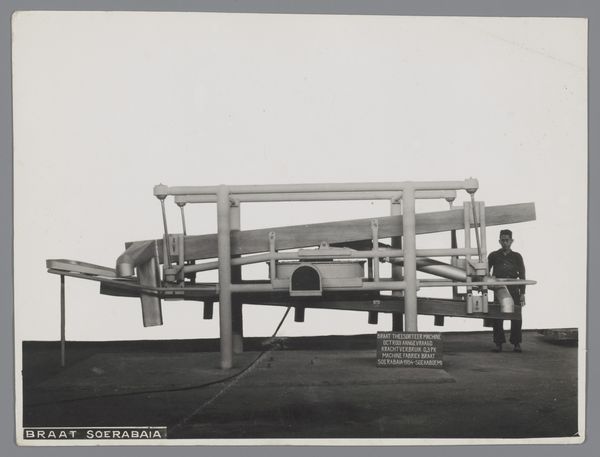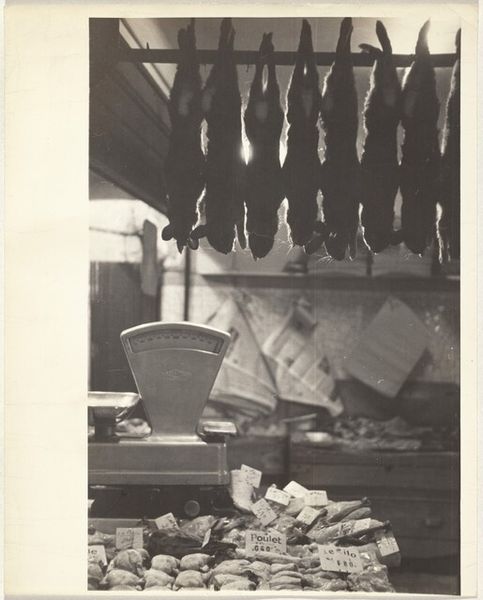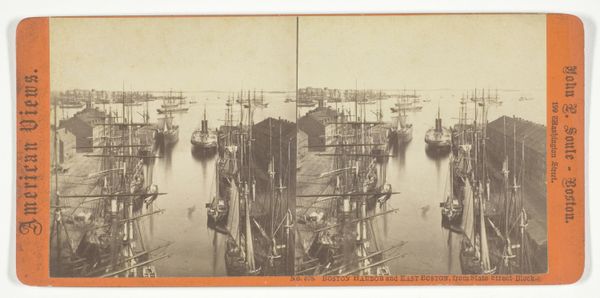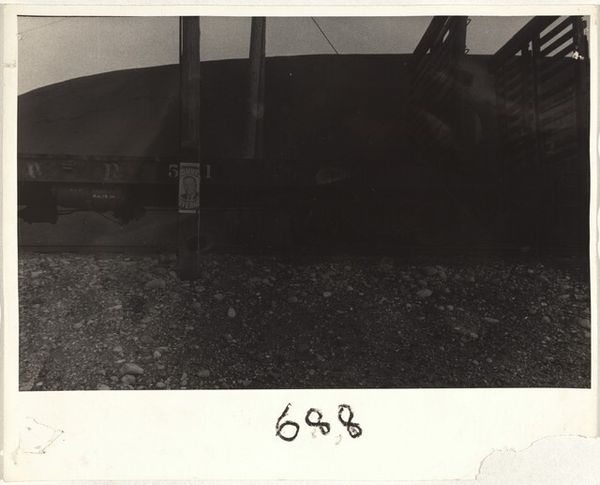
print, photography
# print
#
photography
#
geometric
#
paper medium
Dimensions: height 174 mm, width 235 mm
Copyright: Rijks Museum: Open Domain
This photograph shows a cane cutting rotor, likely made in the Netherlands around 1930. The image presents a stark, mechanical device, a symbol of industrial agriculture and its impact on labor and land. The cane cutter speaks to the economic structures of the time, particularly the sugar industry and its reliance on mechanized processes. We can consider the social conditions that necessitate such a device, reflecting on colonial histories and labor practices in sugar-producing regions. How does this machine alter traditional farming methods and the lives of workers? What power dynamics are embedded in its design and purpose? To fully understand this object, we can consult archives, trade publications, and colonial records. This photograph asks us to consider the complex relationship between technology, labor, and the social order it transforms. It highlights the historian's role in uncovering the layers of meaning embedded in seemingly simple objects, revealing their connections to broader social and institutional contexts.
Comments
No comments
Be the first to comment and join the conversation on the ultimate creative platform.
